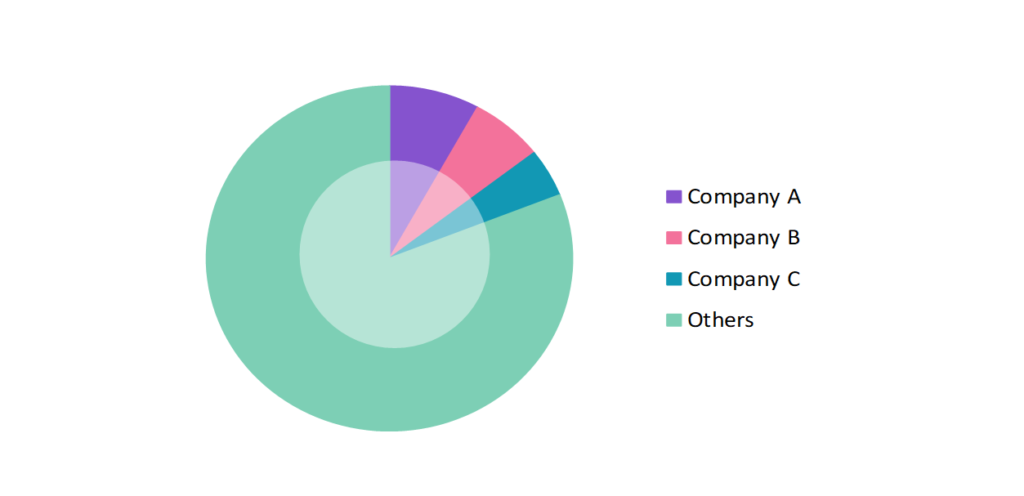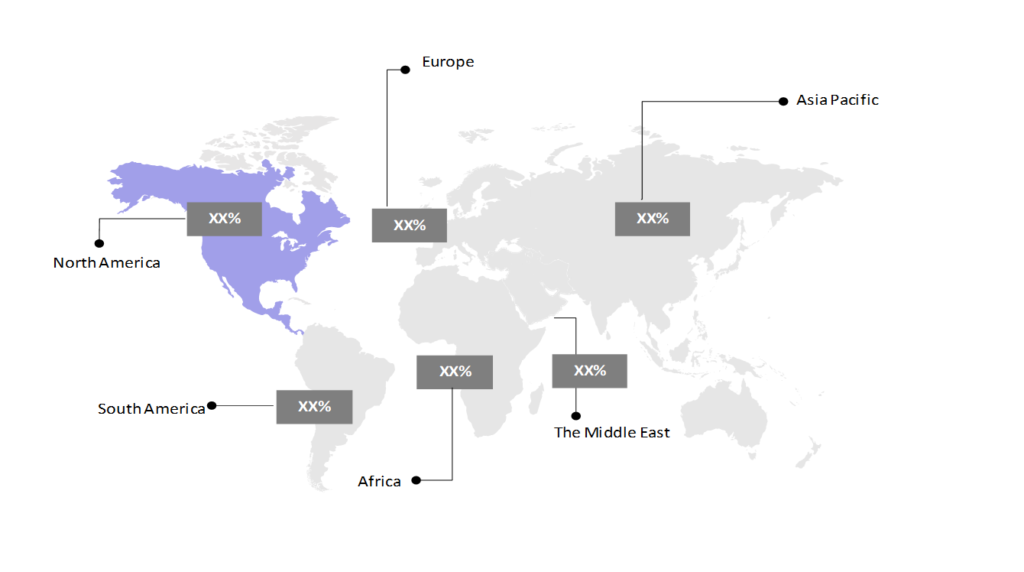Baby Stroller Market Analysis: Growth, Size, Share & Future Trends (2024-2029)
The market report offers a detailed analysis segmented by Type (Standard, All-Terrain, Jogging, Double, Compact and Light Weight, Others); by Distribution Channel (Offline Retail Stores, Online Retail Stores); by Geography (North America, South America, Asia Pacific, Europe, The Middle East, Africa).
Outlook

- The baby stroller market is estimated to be at USD 3,322.31 Mn in 2025 and is anticipated to reach USD 4,314.83 Mn in 2030.
- The baby stroller market is registering a CAGR of 5.37% during the forecast period 2025-2030.
- The baby stroller market is expanding due to rising urbanization, dual-income families, and a growing focus on child safety and convenience. Innovation in stroller designs, such as compact folding, eco-friendly materials, and smart technology integration, is directing consumer interest. However, high prices and stringent safety regulations present challenges, especially for premium and sustainable models. Demand remains robust in developed regions, while emerging markets hold untapped potential for affordable, versatile strollers.
Request a free sample.
Ecosystem

- The participants in the global baby stroller industry are always developing their strategies to preserve a competitive advantage.
- Brands are focusing on unique features such as modular configurations, smart functionalities, and sustainable materials to stand out. Companies that can balance innovative design with affordability gain a competitive edge, appealing to a broader consumer base.
- Several important entities in the baby stroller market include Baby Trend, Inc.; Newwell Brands Inc. (Baby Jogger); Bugaboo International B.V.; Hartan GmbH & Co. KG; Dorel Industries Inc.; and others.
Ask for customization.
Findings
| Attributes | Values |
|---|---|
| Historical Period | 2019-2023 |
| Base Year | 2024 |
| Forecast Period | 2025-2030 |
| Market Size (2025) | USD 3,322.31 Mn |
| Market Size (2030) | USD 4,314.83 Mn |
| Growth Rate | 5.37% CAGR from 2025 to 2030 |
| Key Segments | Type (Standard, All-Terrain, Jogging, Double, Compact and Light Weight, Others); Distribution Channel (Offline Retail Stores, Online Retail Stores); Geography (North America, South America, Asia Pacific, Europe, The Middle East, Africa) |
| Key Vendors | Baby Trend, Inc.; Newwell Brands Inc. (Baby Jogger); Bugaboo International B.V.; Hartan GmbH & Co. KG; Dorel Industries Inc. |
| Key Countries | The US; Canada; Mexico; Brazil; Argentina; Chile; China; India; Japan; South Korea; The UK; Germany; Italy; France; Turkey; UAE; Saudi Arabia; Egypt; South Africa |
| Largest Market | North America |
Get a free quote.
Trends
- Smart Strollers with Sensor Integration: Modern strollers come equipped with sensors for obstacle detection, child safety, and terrain assessment. Some models now use sensor technology to monitor the baby’s comfort level by tracking temperature, humidity, and even body movement. Ella+Elliott and Glüxkind have developed “smart” strollers, integrating features like automatic braking and GPS tracking to enhance parental convenience and safety.
- Use of Lightweight and Compact Folding Mechanisms: Manufacturers are focusing on ultra-light materials like aluminum and carbon fiber to produce strollers that are easier to lift and fold with one hand. Compact folding designs cater to urban lifestyles, which makes it easy to carry strollers onto public transport or fit them into small storage spaces. For example, Bugaboo and GB Pockit offer strollers that fold into compact forms for travel.
- Enhanced Suspension and Terrain-Adaptive Wheels: Strollers are now equipped with enhanced suspension systems and shock-absorbing wheels that allow for a smoother ride on different terrains, from urban pavements to rougher outdoor trails. Bumbleride and Thule specialize in all-terrain strollers, using larger wheels and flexible suspension for both comfort and mobility.
Speak to analyst.
Catalysts
- Rising Parental Preference for Convenience and Safety: Parents increasingly seek strollers that simplify daily routines while ensuring child safety. The demand for features like automatic braking, GPS tracking, and ergonomic designs reflects this priority. Enhanced safety features and the ease of one-handed folding make strollers more appealing to busy parents who prioritize functionality and convenience.
- Growth in Dual-Income Families and Urban Lifestyles: With more dual-income households, parents are looking for solutions that support active lifestyles. Compact, lightweight, and foldable strollers are especially popular among urban families, who require easy transport and storage. This drives the demand for versatile strollers that fit into small spaces, such as apartments or public transportation.
- Increasing Awareness and Demand for Eco-Friendly Products: Eco-consciousness among parents has led to a surge in demand for strollers made from sustainable and non-toxic materials. Many are willing to pay a premium for strollers constructed from recycled metals, organic fabrics, or other eco-friendly materials, spurring brands to focus on sustainable designs. Greentom’s stroller frames are crafted from recycled polypropylene and bio-based plastics, while the fabric for seats and canopies is made from recycled polyethylene terephthalate (PET) bottles. This eco-conscious design has made eco-friendly strollers a popular choice among environmentally aware parents who are willing to invest in products that prioritize sustainability.
Inquire before buying.
Restraints
- Regulatory Compliance and Safety Standards: Strict regulations on child safety products vary across regions, which require manufacturers to meet different standards. This can complicate global expansion and increase production costs, as companies must ensure compliance with certifications and safety requirements in each market, such as American Society for Testing and Materials (ASTM) standards in the US and European Standard (EN) in Europe.
- Supply Chain Disruptions and Rising Raw Material Costs: The cost of materials like aluminum, plastics, and eco-friendly fabrics has been volatile, impacting production costs for stroller manufacturers. Supply chain disruptions, such as delays and shortages, further complicate production timelines, which leads to potential price hikes and inventory challenges, which can affect brand reliability and customer satisfaction.
- Short Product Lifecycle Due to Changing Consumer Preferences: Stroller trends and consumer preferences evolve quickly, which makes it challenging for manufacturers to maintain relevance. Parents often look for new and improved features or designs, which can result in a short lifecycle for existing models. Companies face pressure to continuously innovate and release new models, increasing R&D and marketing expenses.
Personalize this research.
Hotspot

Explore purchase options.
Table of Contents
| 1. Introduction 1.1. Research Methodology 1.2. Scope of the Study 2. Market Overview / Executive Summary 2.1. Global Baby Stroller Market (2019 – 2023) 2.2. Global Baby Stroller Market (2024 – 2030) 3. Market Segmentation 3.1. Global Baby Stroller Market by Type 3.1.1. Standard 3.1.2. All-Terrain 3.1.3. Jogging 3.1.4. Double 3.1.5. Compact and Lightweight 3.1.6. Others 3.2. Global Baby Stroller Market by Distribution Channel 3.2.1. Offline Retail Stores 3.2.2. Online Retail Stores 4. Regional Segmentation 4.1. North America 4.1.1. The US 4.1.2. Canada 4.1.3. Mexico 4.2. South America 4.2.1. Brazil 4.2.2. Argentina 4.2.3. Chile 4.2.4. Rest of South America 4.3. Asia Pacific 4.3.1. China 4.3.2. India 4.3.3. Japan 4.3.4. South Korea 4.3.5. Rest of Asia Pacific 4.4. Europe 4.4.1. The UK 4.4.2. Germany 4.4.3. Italy 4.4.4. France 4.4.5. Rest of Europe 4.5. The Middle East 4.5.1. Turkey 4.5.2. UAE 4.5.3. Saudi Arabia 4.5.4. Rest of the Middle East 4.6. Africa 4.6.1. Egypt 4.6.2. South Africa 4.6.3. Rest of Africa 5. Value Chain Analysis of the Global Baby Stroller Market 6. Porter Five Forces Analysis 6.1. Threats of New Entrants 6.2. Threats of Substitutes 6.3. Bargaining Power of Buyers 6.4. Bargaining Power of Suppliers 6.5. Competition in the Industry 7. Trends, Drivers and Challenges Analysis 7.1. Market Trends 7.1.1. Market Trend 1 7.1.2. Market Trend 2 7.1.3. Market Trend 3 7.2. Market Drivers 7.2.1. Market Driver 1 7.2.2. Market Driver 2 7.2.3. Market Driver 3 7.3. Market Challenges 7.3.1. Market Challenge 1 7.3.2. Market Challenge 2 7.3.3. Market Challenge 3 8. Opportunities Analysis 8.1. Market Opportunity 1 8.2. Market Opportunity 2 8.3. Market Opportunity 3 9. Competitive Landscape 9.1. Baby Trend Inc. 9.2. Newwell Brands Inc. (Baby Jogger) 9.3. Bugaboo International B.V. 9.4. Hartan GmbH & Co. KG 9.5. Dorel Industries Inc. 9.6. Company 6 9.7. Company 7 9.8. Company 8 9.9. Company 9 9.10. Company 10 |
Know the research methodology.
Baby Stroller Market – FAQs
1. What is the current size of the baby stroller market?
Ans. In 2025, the baby stroller market size is USD 3,322.31 Mn.
2. Who are the major vendors in the baby stroller market?
Ans. The major vendors in the baby stroller market are Baby Trend, Inc.; Newwell Brands Inc. (Baby Jogger); Bugaboo International B.V.; Hartan GmbH & Co. KG; Dorel Industries Inc.
3. Which segments are covered under the baby stroller market segments analysis?
Ans. The baby stroller market report offers in-depth insights into Type, Distribution Channel, and Geography.
